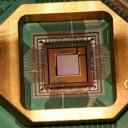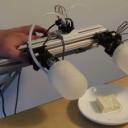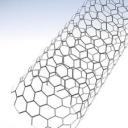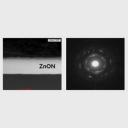 |
by Lauren J. Young on (#PP1V)
The ITU is sorting through likely approaches to the next-generation mobile standard
|
 IEEE Spectrum
IEEE Spectrum
| Link | https://spectrum.ieee.org/ |
| Feed | http://feeds.feedburner.com/IeeeSpectrum |
| Updated | 2025-12-24 21:45 |
 |
by Dexter Johnson on (#PNWD)
Researchers discover a way to create a circuit that changes over time and now are looking for an application
|
 |
by Eliza Strickland on (#PNQS)
The defense agency announces funding for 7 projects under its new ElectRx program
|
 |
by Neil Savage on (#PNJ9)
Physicists showed that subatomic particles oscillate between types, a blow to the Standard Model
|
 |
by Evan Ackerman on (#PNA5)
Spiders use silk tethers to help them make controlled jumps, and now robots do too
|
 |
by Charles Q. Choi on (#PN04)
The new transistor consumes 90 percent less power than conventional devices
|
 |
by Jeremy Hsu on (#PMFX)
One infected vehicle could turn a car dealership into a center for spreading malware to customers
|
 |
by John Boyd on (#PM4E)
Potential for 100 gigabit per second downloads
|
 |
by Douglas McCormick on (#PJ2G)
New tools reveal details of the relationship between a ceramics’ molecular structure and its capacitance
|
 |
by Peter Fairley on (#PH8P)
Arizona’s largest utility is withdrawing a proposed increase for rooftop solar users amidst accusations of improper dealings with state regulators
|
 |
by Jeremy Hsu on (#PGXF)
The new 1,000-qubit machine installed at Google's Quantum AI Lab spends most of its power on keeping cool
|
 |
by Dexter Johnson on (#P9V1)
Nanomaterial responds to the proximity of a finger in milliseconds rather than seconds
|
 |
by Glenn Zorpette on (#P9MG)
A look back at Hollywood’s love affair with the Red Planet
|
 |
by Evan Ackerman and Erico Guizzo on (#P9J3)
Some of the best robot videos from one of the best robot conferences
|
 |
by Alexander Hellemans on (#P9F6)
Will qubits cohabit with silicon-based electronics in the future?
|
 |
by Stephen Cass and Kristen Clark on (#P9CF)
The author of the adapted novel discusses the science behind his plot twists
|
 |
by Jeremy Hsu on (#P9A1)
Microscopic welding lets transistor contacts shrink along with the rest of the device
|
 |
by Evan Ackerman and Erico Guizzo on (#P8YH)
More details on Honda's secretive humanoid project
|
 |
by Tekla Perry on (#P8QN)
Mechanical engineer Clifton Roozeboom thinks physics students spend too much time fussing with complicated measurement tools instead of learning
|
 |
by Nathan Brewer on (#P64P)
This 1964 ad attests to the enduring lure of the final frontier
|
 |
by Evan Ackerman on (#P61T)
With no sensors, motors, or actuators, hot feet are all this robot needs to walk
|
 |
by Dexter Johnson on (#P5RM)
While conversion efficiencies are still low, a few tweaks could make the first optical rectenna ready for commercial use in photovoltaics
|
 |
by Jeremy Hsu on (#P5FD)
A machine classification system can identify harmful website links on Twitter within seconds of being clicked
|
 |
by Tekla Perry on (#P52X)
Magnetic stripe technology retires today after nearly 50 years on the job, but the chip card may just be a temporary replacement
|
 |
by Stuart Nathan on (#P2QD)
Nearly 10,000 visitors saw Bloodhound's guts. It's engineers tell us there's still a bit more testing to do
|
 |
by Sandra Upson and Michael Solita on (#P2DS)
If it can push a spacecraft, engineers are trying to harness it to fly through space
|
 |
by Glenn Zorpette on (#P2DV)
More than a century after the first Mars movie, we finally have a really good one
|
by Susan Hassler on (#P241)
The Martian’s Matt Damon looks great lost in space, but what will next-gen space suits really need to be like?
 |
by Stephen Cass and Kristen Clark on (#P2AX)
Watch Andy Weir, author of the adapted novel, discuss the science behind his plot twists
|
 |
by Stephen Cass on (#P26Y)
Software engineer turned sci-fi author talks about his hit book and seeing it adapted to the big screen
|
 |
by Rachel Courtland on (#P270)
Engineers fashion ways to survive on Mars
|
 |
by Michele Carpenter & Kevin Duda on (#P272)
Compact gyroscopes could help astronauts live and work in space
|
 |
by Rosaleen Ortiz on (#P23Y)
When Fashion Is a Matter of Life or Death
|
 |
by Evan Ackerman on (#P1SP)
Without any hardware modifications, the Harvard RoboBee learns to land in the water and go for a swim
|
 |
by Tekla Perry on (#P1EB)
Google Science Fair finalists create biofuels and a substitute for carbon nanotubes out of chicken feathers
|
 |
by Philip E. Ross on (#P11E)
Don't hold your breath waiting for VW to clean up its diesels. Do hold your breath while crossing the street
|
 |
by Jeremy Hsu on (#NZ1M)
A safety study finds European cars do better in frontal and side crashes while U.S. cars withstand rollovers better
|
 |
by Dexter Johnson on (#NYWE)
Portable detectors could be used to determine drug chirality in hospitals and in the field
|
by Rachel Courtland on (#NYSJ)
As Europe's graphene flagship program turns two, director Jari Kinaret explains the material's negative press and what's to come
by Alexander Hellemans on (#NYGE)
Is this green flow battery a first step to affordable electric storage?
 |
by Peter Fairley on (#NYBZ)
A $20 million Carbon XPrize funded by big fossil fuel producers and users sets a 4-1/2 year challenge to turn carbon dioxide into value-added products. Could there be more value in reducing emissions at the source?
|
 |
by Lucas Laursen on (#NY7S)
Maturing tech shows that diesel exhaust in the real world is far higher than what carmakers advertise
|
 |
by Jeremy Hsu on (#NNCB)
The world's most crowded public space could use smart design, technology, and crowd management to prevent disasters, says expert
|
 |
by Alexander Hellemans on (#NK1V)
Will faster transistors revolutionize video?
|
 |
by Tekla Perry on (#NK0M)
Health-related projects at 2015 Google Science Fair are not just child’s play
|
 |
by Kevin F. Kelly & Cyrus C.M. Mody on (#NJRV)
Why the tantalizing promise of replacing silicon with molecular components has yet to be fulfilled
|
 |
by Monica Heger on (#NJFD)
The goal is to build an interconnected network of offshore wind, tidal, and wave energy projects
|
 |
by Evan Ackerman on (#NJ6T)
This week's best robot videos are here!
|
 |
by Dexter Johnson on (#NJ3M)
Atoms-thin flakes of phosphorus have a crucial property that graphene lacks
|